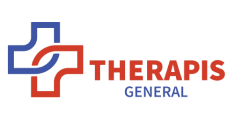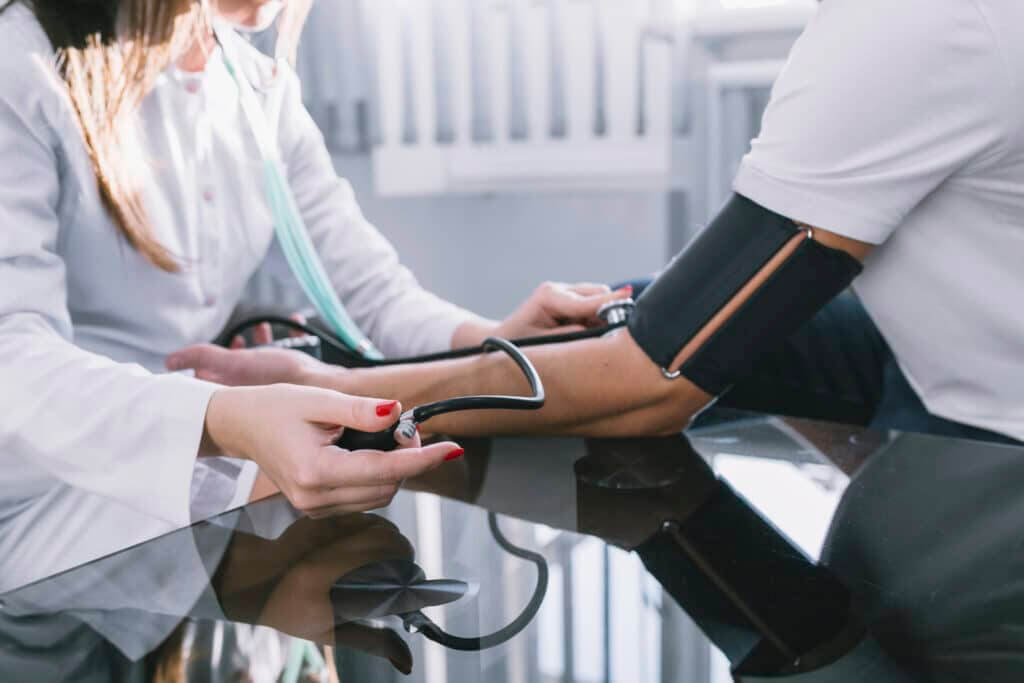Hypertension is defined as the level of blood pressure (BP), the benefits of which clearly outweigh the risks of treatment, as documented in clinical studies.
What is arterial hypertension?
Arterial hypertension is the increased pressure of the blood inside the wall of the large arteries of the body. Blood pressure is recorded with two numbers, e.g., 150/95, and is measured in millimeters of mercury. The larger number is the “systolic” pressure, known as the “big” pressure, and the smaller number is the “diastolic” pressure, known as the “little” pressure. People with high blood pressure have either a systolic pressure of ≥ 140 millimeters of mercury or a diastolic pressure of ≥ 90 millimeters of mercury.
How common is it?
Arterial hypertension usually affects adults and causes numerous diseases in the long term.
One in three adults worldwide has high blood pressure, putting them at increased risk of complications such as coronary heart disease, heart attacks, strokes, and kidney failure.
In our country, the percentage of the population suffering from arterial hypertension is on average 20%. The percentage of men in the general population is 17,71% and of women 22,49%, according to a report of the Greek Statistical Authority for 2012. The probability of the occurrence of arterial hypertension increases with age. In the elderly over 65 years of age, hypertension reaches a rate of 50% of this population.
Hypertension is a condition responsible for 50% of all deaths from stroke and heart disease worldwide. If left unregulated, high blood pressure can also cause heart arrhythmias, heart failure, and vision loss. The risk of complications is generally greater if there are other diseases or conditions that affect the vessels (diabetes, high cholesterol, smoking).
| Category | SBP (mmHg) | ||
| AP in the doctor’s office | ≥140 | and the | ≥90 |
| BP recording (Holter) | |||
| · Day average | ≥135 | and the | ≥85 |
| · Night average | ≥120 | and the | ≥70 |
| · 24-hour average | ≥130 | and the | ≥80 |
| Average BP at home | ≥135 | and the | ≥85 |
*SBP=systolic BP, DBP=diastolic BP
Classification AP
| Category | SAP (mmHg) | DAP (mmHg) | |
| Optimal | <120 | and | <80 |
| Normal | 120-129 | and the | 80-84 |
| High normal | 130-139 | and the | 85-89 |
| Stage 1 hypertension | 140-159 | and the | 90-99 |
| Stage 2 hypertension | 160-179 | and the | 100-109 |
| Stage 3 hypertension | ≥180 | and the | ≥110 |
| Isolated systolic hypertension | ≥140 | and | <90 |
Diagnosis – Follow-up (measurement in the clinic):
- On optimal pressure, new visits at least within five years
- On normal pressure, new visit at least within three years
- On high normal blood pressure, new visit at least within one year, and monitoring measurements at home (measurements or Holter)
- On hypertension, repeat visit immediately and monitor measurements at home (measurements or heart)
How is it treated?
Dietary treatment – treatment of risk factors:
Lifestyle interventions are indicated for all patients with high normal BP or hypertension because they may delay the need for drug therapy or help lower BP through drug therapy. They include smoking cessation, physical activity and exercise, healthy eating and alcohol restriction, weight management, psychological support, cholesterol and lipid control, and regulation of sugar levels in people with diabetes.
When is medication treatment started?
Stage 1 hypertension:
• Depends on cardiovascular risk, estimated long-term benefit, and organ damage due to hypertension
Stage ≥ 2 hypertension:
• Immediate initiation of medication is recommended
What are the treatment goals?
Systolic pressure:
• 120-130 mmHg (for ages 18-69)
• 130-140 mmHg (for ≥ 70 years)
Diastolic pressure:
• < 80 mmHg (for all)
What does medication include?
• A combination of two drugs in most patients, preferably as a one-pill combination. Exceptions are frail elderly patients and those with low-risk, grade 1 hypertension (especially if <150 mmHg)
• It is recommended that the preferred combinations include an angiotensin-converting enzyme inhibitor (ACEi) or an angiotensin II receptor antagonist (ARB), together with a calcium channel blocker (CCB) or a diuretic, but other combinations of the five can be used of major classes (ACEi, ARB, β-blocker, CCB, thiazide/thiazide-like diuretic)
E.g., Triatec/Renitec or Olartan/Aprovel/Diovan, together with Amlopen (combination: Orizal, Exforge) or diuretic (co-Renitec, Olartan plus)
• If BP remains uncontrolled with a two-drug combination, a three-drug combination is recommended, preferably in one pill
• If BP remains uncontrolled with a three-drug combination, the addition of spironolactone (Aldactone) or other diuretics such as amiloride (Frumil/Moduretic), alpha-blockers or beta-blockers (Concor/Lopresor/Lobivon), or clonidine (Catapresan) is recommended )
Penelope Rafoulis-Stergiou, MD, PhD
Curator – Scientific Head of the Cardiology Department Therapis General Hospital
Specialization in Cardiovascular Imaging (EACVI, CMR level 3 certified)
Book your appointment today at 210 729 1111 or by filling out the form you will find HERE.
Find Therapis General Hospital on social media:

